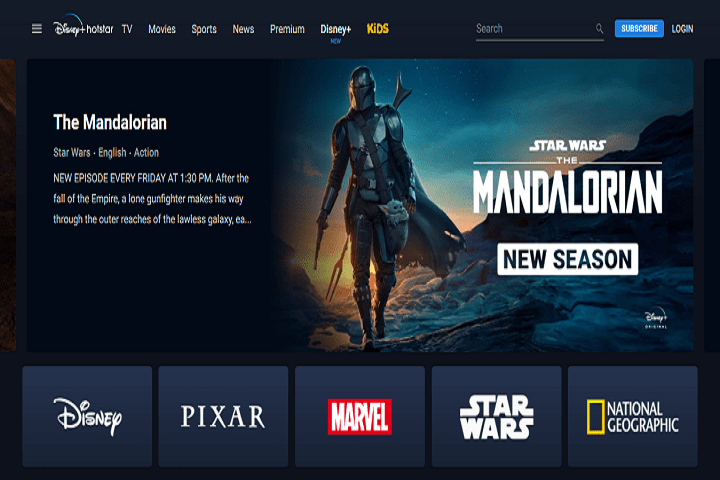Business
What’s the Difference Between a CDP and Personalization Engine?
Companies across the world today have invested billions of dollars in CDP (Customer Data Platform) companies. There are significant differences between CDP platforms and personalization engines.

Companies across the world today have invested billions of dollars in CDP (Customer Data Platform) companies.
This giant leaps forward from the days when data was no doubt available, but it was arranged in silos. Humongous volumes of data flowed in but from various streams and channels, making it fragmented and discrete.
Interpreting coherent patterns and discerning the connections was something that seemed to be a distant dream.
There are significant differences between CDP platforms and personalization engines. As a business owner, marketing professional, or data analyst, it’s strategic to know the difference between a CDP and a personalization engine.
Table of Contents
1. What Kind of Customer Data Do Businesses Need?
The principle of knowing your customers is older than we think!
There is evidence that more than 20,000 years ago, the natives of certain islands in Papua New Guinea traded in a special kind of obsidian knife. These natives lived on islands that had large deposits of natural obsidian. They were able to successfully market their wares in their immediate vicinity and on distant shores.
The principles of marketing, whether it’s obsidian knives or a mobile app, remain the same.
- Who are the buyers?
- What are their needs?
- What is their location?
- What are they willing to pay?
- How can I make them buy more?
As this knowledge evolved, several other learnings also happened.
Traders in ancient times figured out that it’s way more economical and easy to nurture existing customers than look for new ones. They began to pay more attention to what customers bought, when, and where along the trade routes to satisfy their existing customers.

In time, accounting records began to be kept about how much was purchased, at what price, and when.
This information may well have been shared and stored.
Today, though the principles remain the same, data collection, storage, and interpretation methods have undergone enormous changes.
Data science, market segmentation, cloud storage, algorithms, analytics, behavioural marketing, personalization, customer data platforms, personalization, data lakes, data warehouses, and more have made their entry. As new devices, technology, and ways of buying and selling evolve, data itself has undergone a metamorphosis.
Data could be stored from relational and non-relational sources, business applications, social media, and mobile apps.
This helped to improve and channel customer relations interactions more effectively.
Today, business owners have access to a constant flood of data. The important thing is knowing how to leverage this data.
2. What is CDP?
The Customer Data Platform Institute was set up by David Raab, a marketing technology expert and independent consultant. It provides vendor-neutral information about issues, methods, and technology in the field of customer data management.
The institute defines CDP as “a marketer-managed system that creates a persistent, unified database that is accessible to other systems.”
Today’s customer requires a consistent UX across different channels and devices with their preferred brands. If customer data exists in separate silos from the business, this data cannot be aggregated, integrated, and analyzed holistically. It cannot provide the whole truth about every customer.
Today, CDP software platforms are a $1 billion industry. CDP helps businesses add context, predict, and provide the best action. It helps to link cross-channel information that can be used to cross-sell and up-sell. It also helps identify, locate, and address pain points and areas of friction in the customer journey.
This can then be used to adjust marketing strategies with data-backed insight to chart a clear roadmap for marketing strategy. CDP helps businesses recognize significant and influential moments that define the relationship with their customers.
However, as CDP evolves, it also has to consider the customer’s privacy concerns and consent management.

3. What Is a Personalization Engine?
Personalization engines (PE) help businesses connect and interact with individual customers. They collect and collate data from different sources to enhance and create a unique and utterly personal UX for that particular customer.
They can interact with customers through digital channels to provide business-related information, content, offers, and discounts. PE’s help maintains a consistent and regular flow of information through AI, machine learning, AB testing, and linking cookies across devices. They help tailor or curate UX, marketing efforts, and websites with customer recommendations and reviews.
Personalization engines are highly intuitive platforms that offer dynamic content and responsive support.
4. What Is the Difference?
CDP offers customer data that is segmented and organized to create patterns. However, personalization engines take this one step further to develop and implement unique journey management and to orchestrate genuinely personalized experiences.
CDP helps to establish POS integration so that customer-related data and inventory information are synced. Personalization engines are more focused on ensuring that the customer experience is valuable, memorable, and mutually satisfying.
Personalization engines enable the creation and delivery of uniquely personalized experiences across different and multiple channels simultaneously. They are also interaction management solutions and help businesses achieve one-on-one engagement with every single customer. This eliminates the speculation and guesswork of what the customer is looking for.
With personalization engines, the business can automatically predict and deliver the right shopping/service experience. This can be in real-time, and every time, to the customer. Personalization engines and CDP can be used alongside each other for the best outcomes.
Both of these pieces of software can be used to accelerate the pipeline. They can also help boost revenue models by providing every website visitor/customer with the right products, marketing messages, content, and usable information.
Both platforms help e-Commerce teams become more mindful, insightful, personal, and effective. Business leaders can make better business decisions. This means they can tailor their marketing campaigns and initiatives to be more targeted and focused on the individual customer. This also means that the business can be supported across products, services, brands, geographies, domains, and websites.
-

 Instagram4 years ago
Instagram4 years agoBuy IG likes and buy organic Instagram followers: where to buy them and how?
-

 Instagram4 years ago
Instagram4 years ago100% Genuine Instagram Followers & Likes with Guaranteed Tool
-

 Business5 years ago
Business5 years ago7 Must Have Digital Marketing Tools For Your Small Businesses
-

 Instagram4 years ago
Instagram4 years agoInstagram Followers And Likes – Online Social Media Platform















